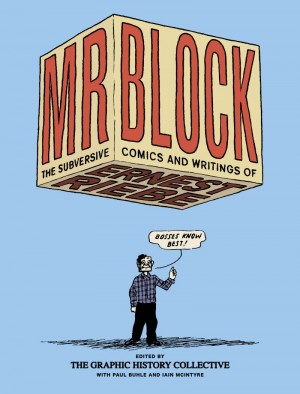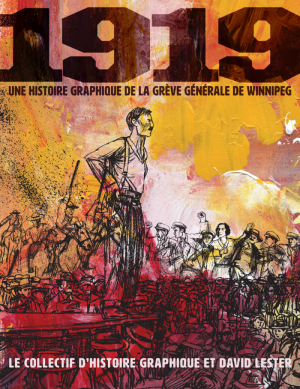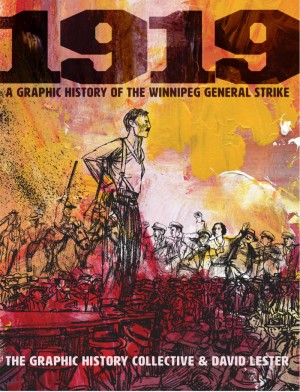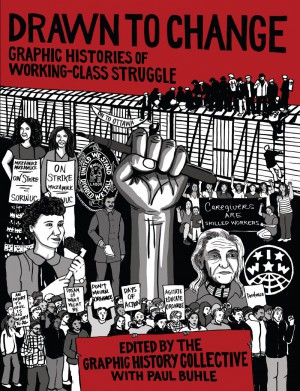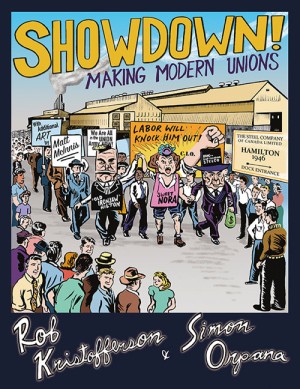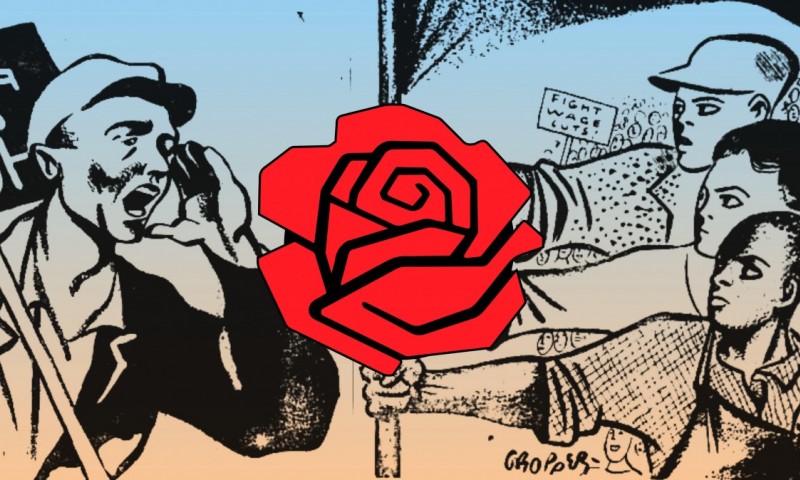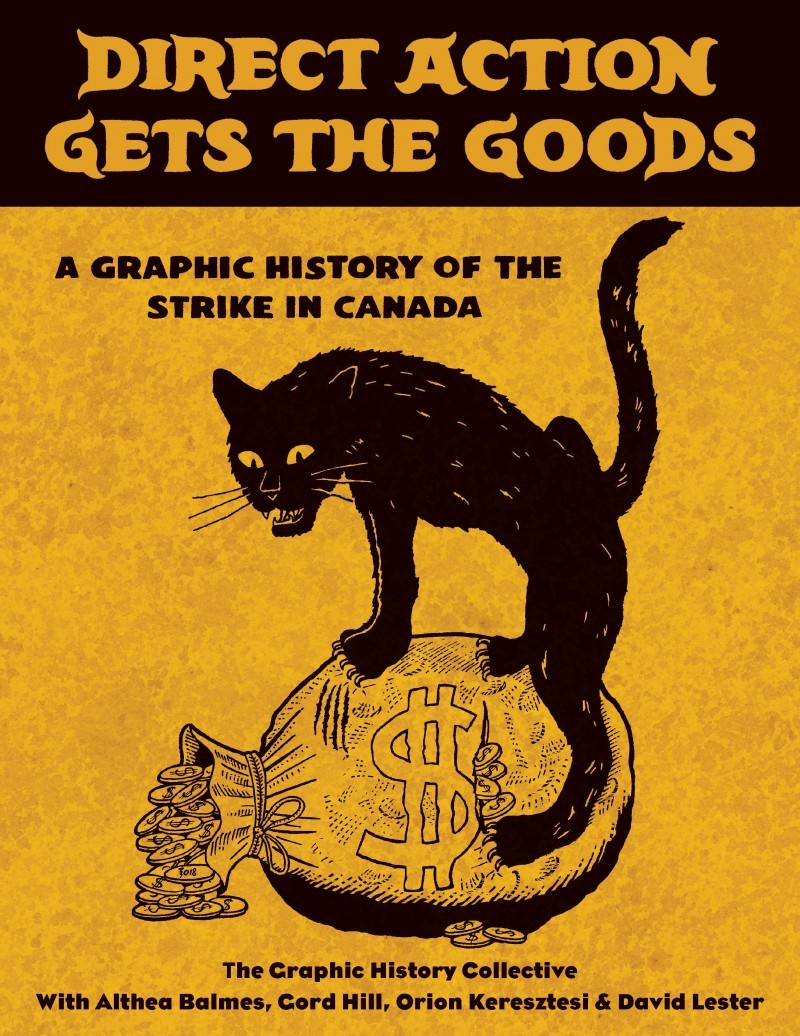
Direct Action Gets the Goods
A Graphic History of the Strike in Canada
Art has always played a significant role in the history of the labour movement. Songs, stories, poems, pamphlets, and comics, have inspired workers to take action against greedy bosses and helped shape ideas of a more equal world. They also help fan the flames of discontent. Radical social change doesn’t come without radical art. It would be impossible to think about labour unrest without its iconic songs like “Solidarity Forever” or its cartoons like Ernest Riebe’s creation, Mr. Block.
In this vein, The Graphic History Collective has created an illustrated chronicle of the strike—the organized withdrawal of labour power—in Canada. For centuries, workers in Canada—Indigenous and non-Indigenous, union and non-union, men and women—have used the strike as a powerful tool, not just for better wages, but also for growing working-class power. This lively comic book will inspire new generations to learn more about labour and working-class history and the power of solidarity.
Praise
The Graphic History Collective has done it again! Direct Action Gets the Goods follows the Sabo Cat, Ralph Chaplin’s timeless symbol of direct action and the strike, on a voyage through Canadian working-class history, from the Knights of Labor and the Wobblies to the CIO and CUPW. Sabo Cat leads the way, and striking and solidarity win the day!
– Gregory S. Kealey, founding editor of Labour/le Travail and author of Workers in Canadian History
The Graphic History Collective shows us that art can inspire hope for radical social change.
– Noam Chomsky, author of Manufacturing Consent, Understanding Power, and Who Rules the World?
Rounding up the circumstances and goals of strikes in Canada from as far back as 1800, Direct Action Gets The Goods presents these not as aberrations in social order but part of the continuum of history, where workers routinely utilize the strike format in order to not only demand rights that aren’t being met, but also keeping power in check. Besides meticulously laying out a history that’s the book’s real accomplishment, and the sequential format helps it unfold smoothly.
– The Comics Beat
Direct Action Gets the Goods is a brilliant and essential resource. Through well-researched history and powerful graphic art, it shows how the strike is key to revolutionary unionism and social movement solidarity. This book will inspire future generations to fight and win against bosses and capitalism.
– Harsha Walia, community organizer and author of Undoing Border Imperialism
Brilliant in narrative power and artistic expression, Direct Action Gets the Goods offers more proof of the Graphic History Collective’s prowess with the graphic form. This book offers an antidote to the apathy of our uncertain times. It will encourage people to learn from labour’s past and to use direct action and the strike in today’s struggles for justice. Magnificent!
– Paul Buhle, editor of Wobblies! and co-author of A People’s History of American Empire
This is a most inspiring and timely account of strikes in Canada. The iconic black Sab-Cat, as the narrator, reminds readers that workers’ gains are the result of organization and struggle. Direct Action Gets the Goods should be in every union hall and school library.
– Andrée Lévesque, author of Making and Breaking the Rules and Résistance et Transgression and editor and translator of Madeleine Parent
A lively, colourful reminder that for generations workers in Canada have repeatedly walked off the job together to demand their rights. Great artwork takes the reader through that long and fascinating history.
– Craig Heron, author of Lunch-Bucket Lives and The Canadian Labour Movement
A timely and passionate reminder of the power that resides in all working people – to withdraw our labour power in the name of collective struggles. Vividly illustrated and written, Direct Action Gets the Goods is an invaluable tool for teaching and for organizing.
– Kendra Strauss, Director and Associate Professor, Labour Studies Program, Simon Fraser University
At a time when fewer people have first-hand experience with strikes, we should be grateful that the Graphic History Collective has created this illustrated history of strikes in Canada. The authors and illustrators understand that this history matters because it can inspire people today to use the strike as a tool for social change.
– David Camfield, author of Canadian Labour in Crisis and We Can Do Better and Associate Professor in Labour Studies and Sociology, University of Manitoba
Not only is learning about the history of workers’ organizing important, this book–and a certain black cat–make it very enjoyable. The Graphic History Collective has created another gem.
– Kendra Coulter, author of Animals, Work, and the Promise of Interspecies Solidarity and Revolutionizing Retail and Associate Professor of Labour Studies, Brock University
Direct Action Gets the Goods brings working-class history to life and reminds us that the power of working people lies not in moral appeals to the rich and powerful, but in our ability to disrupt “business as usual” and shut it down. Read on and resist!
– Simon Black, Assistant Professor of Labour Studies, Brock University
Visually dynamic, with different artists contributing a range of compelling styles, Direct Action Gets the Goods depicts how important strikes are as a tool of protest against injustice and inequality.
– Judy Fudge, co-author of Labour Before the Law and Professor, School of Labour Studies, McMaster University
These graphic histories were enjoyable reads and I look forward to see what the Graphic History Collective is up to next.
– RANKANDFILE.CA
The strike is the workers’ ultimate weapon. It demands what the boss never wants to concede, be it more wages, less time on the job, benefits of all kinds, even dignified treatment. The Graphic History Collective shows us how strikes punctuate our history with incisive reminders that we live in a fundamentally divided society, one in which the haves and the have nots routinely do battle.
– Bryan D. Palmer, author of Working-Class Experience and co-author of Toronto's Poor: A Rebellious History
Contents
| Comics to Fan the Flames of Discontent | The Graphic History Collective |
| Strikes, Struggle, and Solidarity: Workers and Justice in Capitalist Society | Charles Smith |
| Introduction | Kara Sievewright |
| Chapter 1 | 1900-1900 Gord Hill |
| Chapter 2 | 1900-1940s David Lester |
| Chapter 3 | 1940s-1970s Orion Keresztesi |
| Chapter 4 | 1970s-Present Althea Balmes |
| Conclusion | Kara Sievewright |
| Timeline | |
| Notes and Bibliography |

